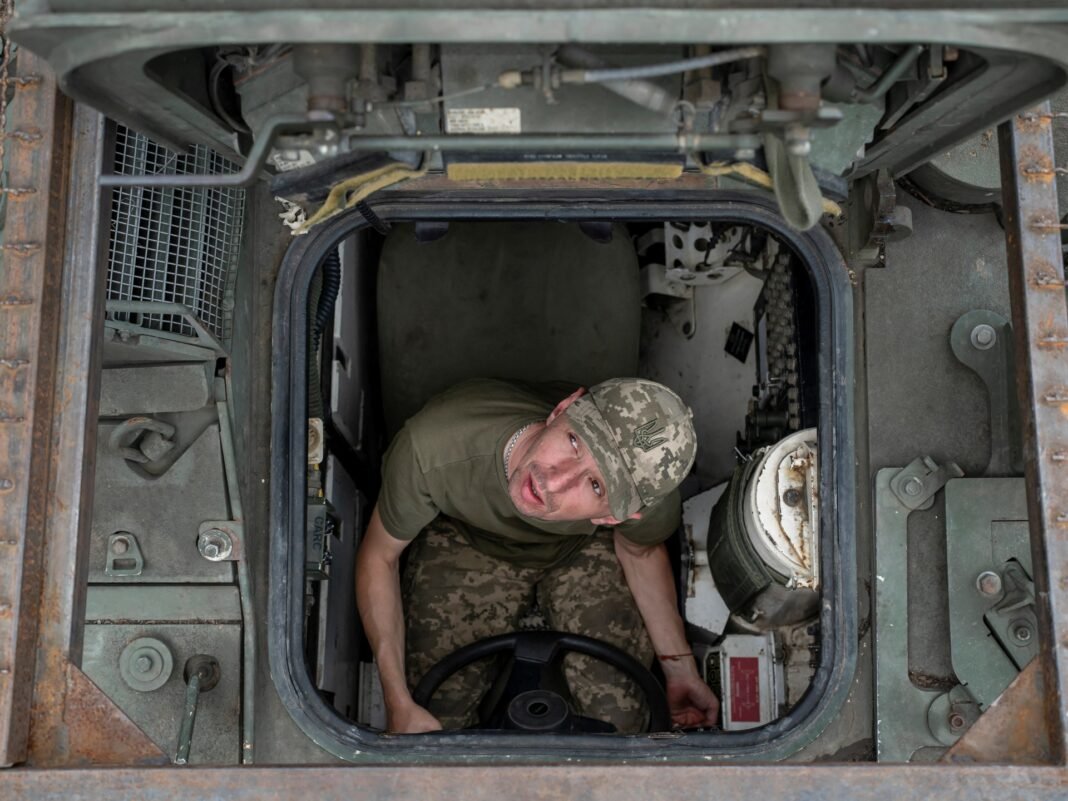Dynamic Shifts and Strategic Developments in the Eastern Ukraine Conflict
The Luhansk region in eastern Ukraine has reportedly fallen entirely under Russian control, marking a pivotal moment in the protracted conflict. This makes luhansk the first of the four territories annexed by Russia to be fully occupied.
leonid Pasechnik, appointed by Russia as governor of Luhansk, declared on state television that his forces had secured total dominance over the region. Still,some military analysts dispute this assertion,pointing out ongoing resistance pockets in two villages and recalling earlier claims of victory that were later overturned during Ukrainian counteroffensives.
despite these conflicting reports, Russian troops have maintained a gradual eastward advance since the invasion began nearly three years ago. Thier progress has been steady but lacks rapid or decisive breakthroughs on the battlefield.
Gradual Territorial Gains and Their Strategic Importance
By June 2025, Russian forces reached Dnipropetrovsk’s border after consolidating control across Donetsk’s full width for the first time during this war-though Kyiv still retains roughly one-third of Donetsk territory. These developments underscore Russia’s slow yet persistent territorial expansion while highlighting Ukraine’s ongoing struggle to reclaim lost ground.
The Russian Ministry of Defense announced capturing several villages near Donetsk throughout late June: Zaporizhzhia,Perebudova,Shevchenko,Yalta on June 27; Chervona Zirka on June 28; followed shortly by Novoukrainka. While these are relatively minor gains geographically, they contribute to sustained offensive momentum despite limited strategic breakthroughs.
The Role and Reality of “Buffer Zones” in Military Strategy
A central objective behind Moscow’s operations is creating buffer zones within Ukrainian territory designed to shield it’s own borders from potential counterattacks. Igor Korotchenko from National Defense magazine explained that these zones aim to extend between 70 and 120 kilometers (approximately 40 to 75 miles) deep into Ukraine.
This concept is not unprecedented: when Russia recaptured Kursk last year-a border area briefly held by Ukraine-military officials emphasized establishing buffer areas at least 20-30 kilometers wide for security reasons. More recently Kremlin figures such as Dmitry Medvedev have publicly displayed maps suggesting expansive buffer zones covering large portions of Ukrainian land if Western military aid continues supporting Kyiv.
Kremlin spokesperson Dmitry Peskov confirmed new offensives near Dnipropetrovsk as part of this buffer zone strategy following recent territorial advances there. Although Moscow officially recognizes only four annexed regions-Luhansk, donetsk, Zaporizhia and Kherson-President Putin has repeatedly implied all Ukrainian lands fall under Russian sovereignty. This position fuels speculation among experts that “buffer zones” serve more as justifications for further territorial expansion than purely defensive measures.
Evolving Defense Policies Amid Rising tensions
In response to escalating threats along its borders and occupied territories, Kyiv announced withdrawal from the Ottawa Treaty banning antipersonnel landmines-a move intended to enhance defensive capabilities where alternatives are scarce.“Antipersonnel mines often represent an essential defense tool,” stated President Volodymyr Zelenskyy when unveiling this policy shift aimed at strengthening frontline resilience amid intensifying hostilities.
Tactical Counteroffensives Highlighting Ukrainian Determination
Despite setbacks on various fronts, Ukraine continues executing impactful strikes deep inside areas controlled by Russia using long-range drones and missile systems:
- A drone assault targeted Kirovske airfield between June 27-28 destroying multiple attack helicopters according to Ukrainian intelligence;
- An aerial strike damaged at least four Sukhoi-34 fighter jets stationed at Marinovka airbase used for launching glide bomb attacks;
- An intelligence facility located in Bryansk region was reportedly neutralized around June 26;
Zelenskyy underscored growing concerns about expanding drone warfare capabilities deployed by both sides amid escalating clashes-the previous day saw Russia launch its largest unmanned aerial strike yet with nearly 450 drones accompanied by dozens of missiles targeting urban centers across Ukraine. Most were intercepted or jammed electronically thanks to improved air defenses developed with international assistance.
Drones Reshape Modern Warfare Dynamics

The surge in unmanned aerial attacks reveals Moscow’s intent not only against frontline positions but also rear areas including civilian communities slightly removed from active combat lines-a tactic analysts interpret as readiness for future ground offensives targeting broader swaths beyond immediate battlefronts.“These strikes extend beyond red line cities into yellow zone communities,” says geopolitical expert Victoria Vdovychenko from Cambridge University’s Center for Geopolitics.
Global Assistance Prioritizes Air Defense Capabilities

This year germany committed approximately nine billion euros ($11 billion) toward enhancing Ukraine’s air defense infrastructure-a critical need given rising missile threats-and plans include boosting domestic production capacity for interceptor systems specifically designed against incoming projectiles like cruise missiles and drones.Zelenskyy stressed scaling up interceptor missile manufacturing alongside developing both defensive interceptor drones and offensive long-range uavs capable of striking deeper targets within occupied territories or even across borders.”


“The speed at which we advance drone technology must keep pace with evolving wartime realities,” Zelenskyy remarked recently regarding efforts focused jointly on interceptors defending against enemy UAVs while expanding offensive drone capacities capable of striking deeper targets within occupied regions or even beyond national borders.”





